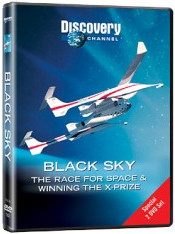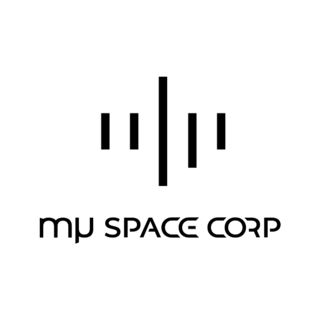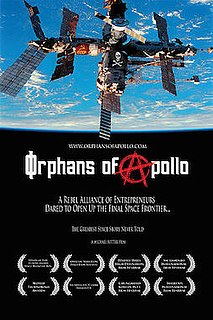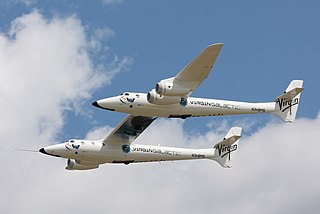 W
WSpace tourism is human space travel for recreational purposes. There are several different types of space tourism, including orbital, suborbital and lunar space tourism. To date, orbital space tourism has been performed only by the Russian Space Agency. Work also continues towards developing suborbital space tourism vehicles. This is being done by aerospace companies like Blue Origin and Virgin Galactic. In addition, SpaceX announced in 2018 that they are planning on sending space tourists, including Yusaku Maezawa, on a free-return trajectory around the Moon on the Starship.
 W
WThe Airbus Defence and Space Spaceplane, also called EADS Astrium TBN according to some sources, is a suborbital spaceplane concept for carrying space tourists, proposed by EADS Astrium, the space subsidiary of the European consortium EADS. A full-size mockup was officially unveiled in Paris, France, on June 13, 2007, and is now on display in the Concorde hall of the Musée de l'Air et de l'Espace. The project is the first space tourism entry by a major aerospace contractor.
 W
WEric C. Anderson is an American entrepreneur and aerospace engineer. He is the co-founder and chairman of Space Adventures Ltd., the first commercial spaceflight company, which has arranged for eight missions for privately funded individuals to the International Space Station since 2001. Anderson is widely credited as having established the market for commercial spaceflight. He is also a founding partner of Space Angels Network, CEO of Intentional Software Corporation, co-founder and chairman of Planetary Power, Inc., co-founder and co-chairman of Planetary Resources and chairman of Personal.com and Booster Fuels.
 W
WArianespace SA is a European company founded in 1980 as the world's first commercial launch service provider. It undertakes the operation and marketing of the Ariane programme. The company offers a number of different launch vehicles: the heavy-lift Ariane 5 for dual launches to geostationary transfer orbit, the Soyuz-2 as a medium-lift alternative, and the solid-fueled Vega for lighter payloads.
 W
WAxiom Orbital Segment and Axiom Segment are names given to the planned components of the International Space Station (ISS) designed by Axiom Space for commercial space activities and space tourism uses. Axiom Space gained NASA approval for the venture in January 2020. Up to three Axiom modules will attach to the International Space Station. The first module could be launched no later than 2024 and will dock to the forward port of Harmony, requiring relocation of Pressurized Mating Adapter (PMA-2). Axiom Space plans to attach up to two additional modules to its first core module, and send private astronauts to inhabit the modules.
 W
WAxiom Orbital Segment and Axiom Segment are names given to the planned components of the International Space Station (ISS) designed by Axiom Space for commercial space activities and space tourism uses. Axiom Space gained NASA approval for the venture in January 2020. Up to three Axiom modules will attach to the International Space Station. The first module could be launched no later than 2024 and will dock to the forward port of Harmony, requiring relocation of Pressurized Mating Adapter (PMA-2). Axiom Space plans to attach up to two additional modules to its first core module, and send private astronauts to inhabit the modules.
 W
WBlack Sky: The Race For Space is a 2004 Discovery Channel documentary about Space Ship One, and how a small team backed by Paul Allen achieved human suborbital spaceflight and won the Ansari X Prize. It contains insights about how the rocketplane was built, the challenges they faced when they flew it, the vision of Burt Rutan about the future of this technology, and his thoughts about NASA and government. It won a Peabody Award in 2004.
 W
WBlue Origin, LLC is an American privately funded aerospace manufacturer and sub-orbital spaceflight services company headquartered in Kent, Washington. Founded in 2000 by Jeff Bezos, the company is led by CEO Bob Smith and aims to make access to space cheaper and more reliable through reusable launch vehicles.
 W
WThe dearMoon project is a lunar tourism mission and art project conceived and financed by Japanese billionaire Yusaku Maezawa. It will make use of a SpaceX Starship on a private spaceflight flying a single circumlunar trajectory around the Moon. The passengers will be Maezawa, 8 civilians, and one or two crew members. The project was unveiled in September 2018 and the flight is expected to occur no earlier than 2023.
 W
WGalactic Suite Design is an aerospace design company based in Barcelona, Spain. The company develops concepts, design and interiors of habitats and vehicles. The project that first brought the company into the public eye was the Galactic Suite Space Resort, which intends to develop a private small space station at LEO, the orbital segment of a space tourism experience, which will also include intensive training on a tropical island.
 W
WTakafumi Horie is a Japanese entrepreneur who founded Livedoor, a website design operation that grew into a popular internet portal. After being arrested and charged with securities fraud in 2006, he severed all connections with the company. His trial began on September 4, 2006. On March 16, 2007, Horie was sentenced to imprisonment of 2 years and 6 months.
 W
WThe XCOR Lynx was a proposed suborbital horizontal-takeoff, horizontal-landing (HTHL), rocket-powered spaceplane that was under development by the California-based company XCOR Aerospace to compete in the emerging suborbital spaceflight market. The Lynx was intended to carry one pilot, a ticketed passenger, and/or a payload above 100 km altitude. The concept was under development since 2003, when a two-person suborbital spaceplane was announced under the name Xerus.
 W
WMir was a space station that operated in low Earth orbit from 1986 to 2001, operated by the Soviet Union and later by Russia. Mir was the first modular space station and was assembled in orbit from 1986 to 1996. It had a greater mass than any previous spacecraft. At the time it was the largest artificial satellite in orbit, succeeded by the International Space Station (ISS) after Mir's orbit decayed. The station served as a microgravity research laboratory in which crews conducted experiments in biology, human biology, physics, astronomy, meteorology, and spacecraft systems with a goal of developing technologies required for permanent occupation of space.
 W
Wmu Space and Advanced Technology Co., Ltd., operating under the name mu Space Corp, is a Thailand-based company that provides satellite broadband and mobile connectivity services. The company was founded by James Yenbamroong in 2017 in Bangkok, Thailand, with the goal to research and develop space technology and applications for use in urban and rural areas.
 W
WNew Shepard is a vertical-takeoff, vertical-landing (VTVL), crew-rated suborbital launch vehicle that is being developed by Blue Origin as a commercial system for suborbital space tourism. Blue Origin is owned and led by Amazon.com founder and businessman Jeff Bezos and aerospace engineer Rob Meyerson. NASA Silver Snoopy Award winner Robert Smith is the company's chief executive officer.
 W
WThe Orbital Technologies Commercial Space Station is a proposed orbital space station intended for commercial clients. The station was initially proposed in 2010 by Orbital Technologies, a Russian aerospace firm, who is collaborating to develop the station with Rocket and Space Corporation Energia.
 W
WOrphans of Apollo is a 2008 documentary film directed and produced by Michael Potter, co-directed by Becky Neiman and edited by Todd Jones, which describes how a band of entrepreneurs tried to privatize the space station Mir and tells the story that led to the development of MirCorp. It features prominent NewSpace entrepreneurs and space advocates, backed financially by Walter Anderson.
 W
WPD Aerospace , often abbreviated PDAS, is a Japanese space tourism company based in Nagoya founded in 2007 by Shuji Ogawa. The "PD" in the company's name stands for "pulse detonation". PDAS is developing a suborbital spaceplane to carry two pilots and six passengers using a hybrid of jet and rocket power. Initial tickets are planned for ¥ 14,000,000 eventually lowering to ¥400,000.
 W
WThe Quasi Universal Intergalactic Denomination (QUID) is a proposed "space currency" created as a viral marketing campaign launched by Travelex with the London-based public relations and advertising firm, talkPR. The full name is a backronym from 'quid', a slang term for the British Pound. The campaign stated that Travelex was launching a new form of money for space tourists that had no sharp edges, was chemically inert, and had other advantages over paper money.
 W
WRocketShip Tours is an American space tourism company founded in 2008 by travel industry entrepreneur Jules Klar and which planned to provide sub-orbital human spaceflights to the paying public, in partnership with rocketplane developer XCOR Aerospace. Klar created RocketShip Tours to act as General Sales Agent for XCOR Aerospace.
 W
WTier One was a Scaled Composites' 1990s–2004 program of suborbital human spaceflight using the reusable spacecraft SpaceShipOne and its launcher White Knight. The craft was designed by Burt Rutan, and the project was funded 20 million US Dollars by Paul Allen. In 2004 it made the first privately funded human spaceflight and won the 10 million US Dollars Ansari X Prize for the first non-governmental reusable manned spacecraft.
 W
WThe Scaled Composites Model 348 White Knight Two (WK2) is a quadjet cargo aircraft that is used to lift the SpaceShipTwo spacecraft to release altitude. It was developed by Scaled Composites from 2007 to 2010 as the first stage of Tier 1b, a two-stage to suborbital-space crewed launch system. WK2 is based on the successful mothership to SpaceShipOne, White Knight, which itself is based on Proteus.
 W
WSpace Tourists is a feature-length documentary of the Swiss director Christian Frei. The film had its premiere at the Zurich Film Festival in 2009 and has won the "World Cinema Directing Award" at the Sundance Film Festival in 2010.
 W
WThe Scaled Composites Model 339 SpaceShipTwo (SS2) is an air-launched suborbital spaceplane type designed for space tourism. It is manufactured by The Spaceship Company, a California-based company owned by Virgin Galactic.
 W
WSwiss Space Systems (S3) was a company that planned to provide orbital launches of small satellites and manned sub-orbital spaceflights. The company was based in Payerne in western Switzerland, near Payerne Air Base, where it planned to build a spaceport in 2015. Suborbital spaceplanes were to be launched from an Airbus A300, giving the spacecraft more initial speed and altitude than if it were launched from the ground. The spacecraft, in turn, would release a disposable third stage.
 W
WSpace tourism is human space travel for recreational purposes. There are several different types of space tourism, including orbital, suborbital and lunar space tourism. To date, orbital space tourism has been performed only by the Russian Space Agency. Work also continues towards developing suborbital space tourism vehicles. This is being done by aerospace companies like Blue Origin and Virgin Galactic. In addition, SpaceX announced in 2018 that they are planning on sending space tourists, including Yusaku Maezawa, on a free-return trajectory around the Moon on the Starship.
 W
WLunar tourism may be possible in the future if trips to the Moon are made available to a private audience. Some space tourism startup companies are planning to offer tourism on or around the Moon, and estimate this to be possible sometime between 2023 and 2043.
 W
WVirgin Galactic is an American spaceflight company within the Virgin Group. It is developing commercial spacecraft and aims to provide suborbital spaceflights to space tourists and suborbital launches for space science missions. SpaceShipTwo, Virgin Galactic's suborbital spacecraft, is air launched from beneath a carrier airplane known as White Knight Two.
 W
WVMS Eve is a carrier mothership for Virgin Galactic and launch platform for SpaceShipTwo-based Virgin SpaceShips.
 W
WVSS Enterprise was the first SpaceShipTwo (SS2) spaceplane, built by Scaled Composites for Virgin Galactic. As of 2004, it was planned to be the first of five commercial suborbital SS2 spacecraft planned by Virgin Galactic. It was also the first ship of the Scaled Composites Model 339 SpaceShipTwo class, based on upscaling the design of record-breaking SpaceShipOne.
 W
WVSS Unity, previously referred to as VSS Voyager, is a SpaceShipTwo-class suborbital rocket-powered crewed spaceplane. It is the second SpaceShipTwo to be built and will be used as part of the Virgin Galactic fleet. It first reached an altitude of more than 50 mi (80 km) on 13 December 2018.